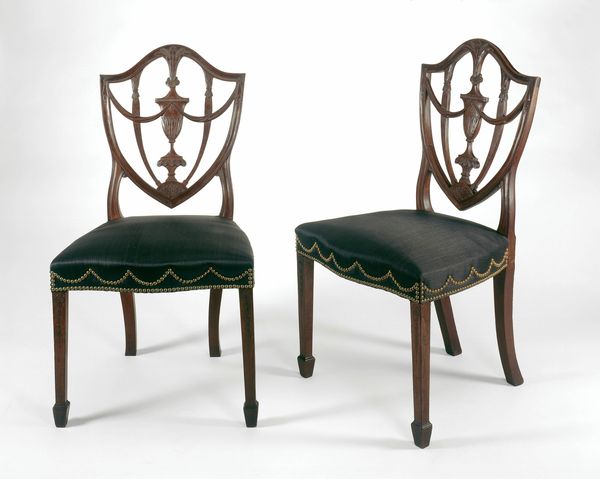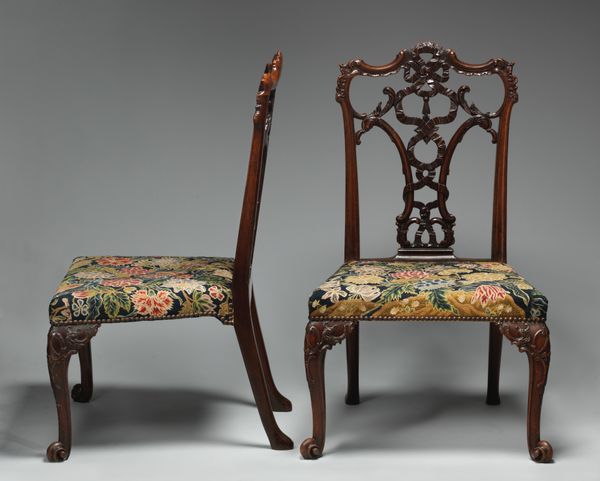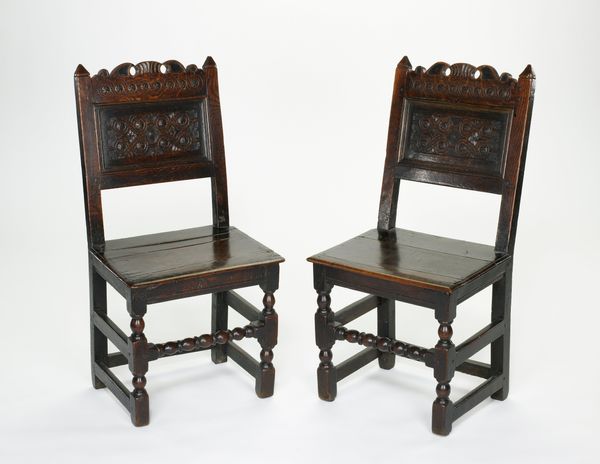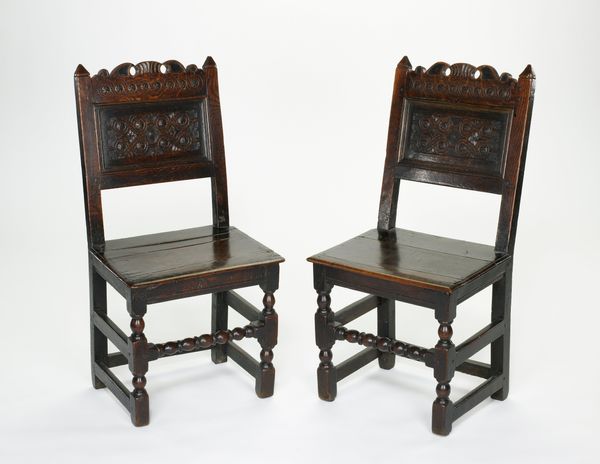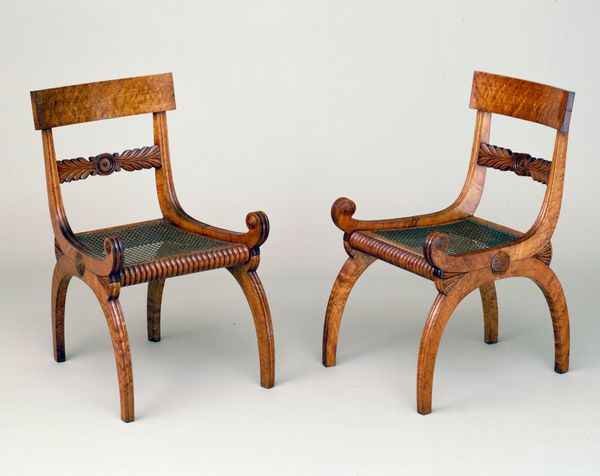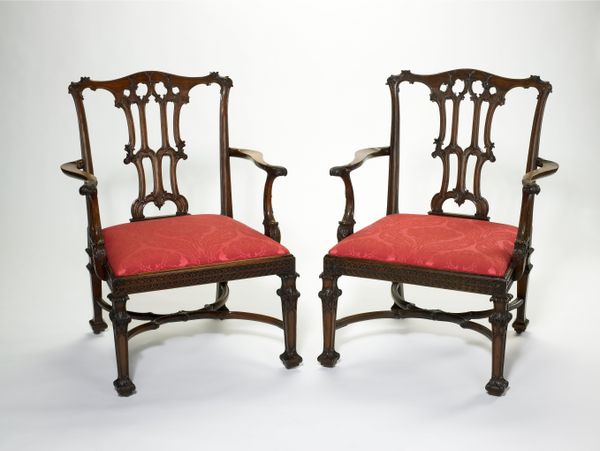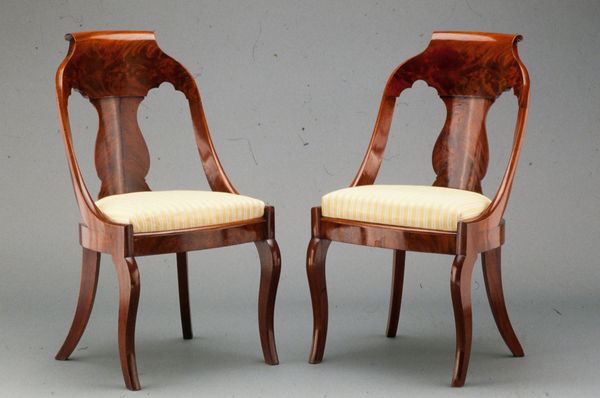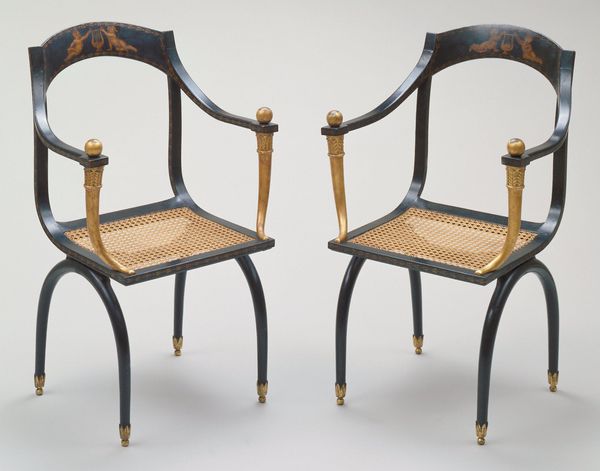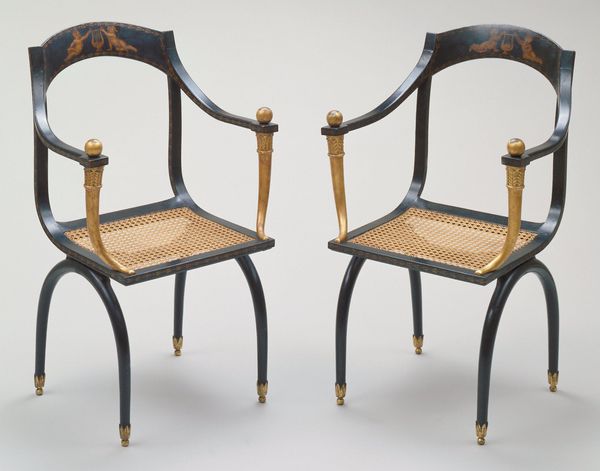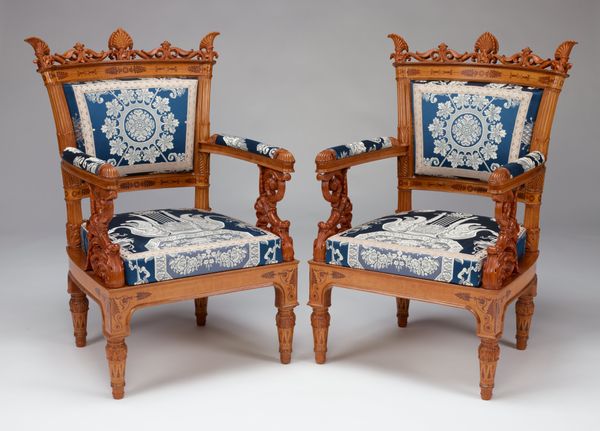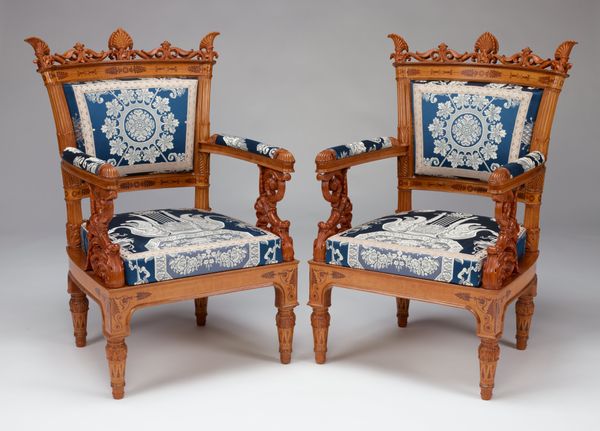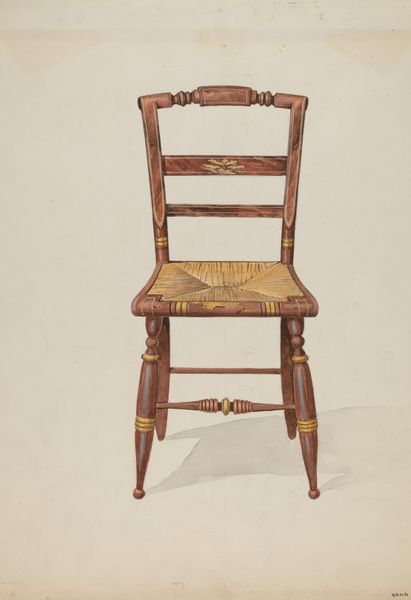
painting, wood
#
painting
#
sculpture
#
furniture
#
sculptural image
#
wood
#
decorative-art
Dimensions: 33 1/2 x 15 1/2 x 15 3/4 in. (85.09 x 39.37 x 40.01 cm)
Copyright: Public Domain
Editor: So, here we have a pair of balloon-back chairs crafted around 1860-1865. The anonymous artist employed wood, transforming it into decorative art, now residing here at the Minneapolis Institute of Art. There is an austerity to it – the dark wood and restrained floral embellishments almost feel like a somber poem in chair form. What’s your interpretation of these pieces? Curator: A somber poem, eh? I like that. For me, these chairs whisper of Victorian sensibilities, a fascination with nature tempered by formality. They were functional objects, of course, but also a canvas for expressing artistry. Imagine these in a parlor, wouldn’t that be something? Each swirl of paint seems to capture a mood, an attempt to bring beauty into everyday life, even when things weren't easy back then. What feelings do those hand-painted embellishments bring to mind? Editor: The florals are definitely pretty. Maybe a yearning for the outdoors or a simpler time. Almost nostalgic. Do you think this person, the artist, wanted this pair to have symmetry in particular? I see minor distinctions but they seem very purposefully crafted with matching features. Curator: Interesting observation! While mass production was starting, these were likely made by hand. The slight variations highlight the touch of the artisan and, I would wager, add to their individual character. That the intention was for balance is definitely there! See the way your eye is drawn up? It almost makes it float. They aren't identical, so their shared language is like two friends exchanging anecdotes but recalling them each a little differently. I suppose, a dialogue of design, if you will. Editor: That's a lovely image to envision! The artisan, in this dialogue. Thinking about these pieces having lived lives and possibly carrying families' stories is actually quite moving to me now. Curator: Exactly. Isn’t it fascinating how everyday objects can hold so much history and emotion, how their creation reflects a society’s values, how time passes? We never actually just "see" when observing art—we see its ripples, the people it touched. These chairs were made with a sense of balance and intended purpose of visual pleasure and comfort.
Comments
No comments
Be the first to comment and join the conversation on the ultimate creative platform.
